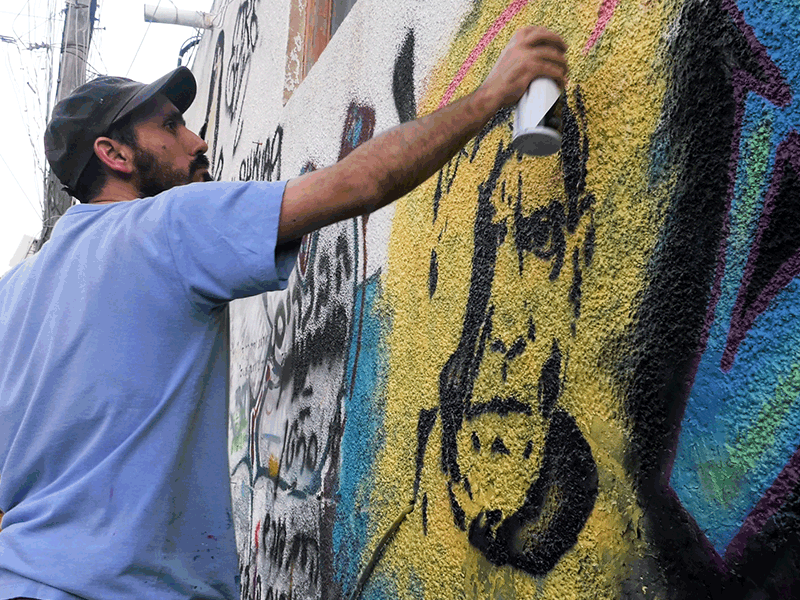When Igal Hecht and Aaron Daniel Mandel first saw the sculpture, they were shocked. Sixty feet long and 12 feet high, the Fountain of Tears is made of tan Jerusalem stone, from which seven etchings of a crucified Jesus emerge. Below the seven Christs stand individual Holocaust survivors, frail and bald, sculpted from bronze, looking tortured while gazing up at the Christian figures. The meaning is clear: there is a connection between the suffering of the Holocaust and the suffering of Christ.
“It made us feel a bit uneasy, I’m not gonna lie,” Mandel recalls. But that was precisely why he and Hecht, both seasoned documentary filmmakers from Toronto, wanted to capture it – and its artist – on film. “Art should sometimes make you feel uneasy,” he says.

They were in Arad, Israel, just 25 kilometres west of the Dead Sea, in the desert backyard of Canadian-born artist Rick Wienecke, to film an episode of their new documentary TV series Holy Art, which debuts in Canada June 3 on Yes TV. Each episode highlights a different Israeli artist – a sculptor, a graffiti painter, a tattoo artist – whose work reflects the religious inspiration of working in the Holy Land.
READ: JEWISH MUSIC WEEK CELEBRATES ISRAEL’S 70TH BIRTHDAY
This is “not your corner store Judaica stuff,” Mandel explains. Their goal is to capture art and artists whose work is mesmerizing, diverse and transcends cultural and gender barriers. The show is multi-denominational, featuring artists who are Christians and Muslims, Jews and Druze. While each is not necessarily a religious artist, spirituality seeps into each of their works.
“There really isn’t a show this major, in Israel or anywhere else in the world, that explores Israeli art, showcasing the multiculturalism of Israel,” Hecht says.
He and Mandel got the idea when filming a documentary project a couple years ago that profiled buskers around the world. They only filmed a small portion of that show in Israel, but were struck by the quality and abundance of art.
They already had a good relationship with executives at Yes TV, which specializes in family and faith-based programming. Combining the two seemed like a natural move.
“What a better country than the Holy Land to show art that’s inspired by spirituality?” Hecht says.

He and Mandel started working on the show in May 2017. Since then, they’ve clocked in roughly 20,000 kilometres in their rental car, driving from the northern tip of Rosh Pina in the Upper Galilee to the southern Negev Desert. (Considering the country is just 424 kilometres long, that’s something worth boasting.)
Their producers liked Holy Art so much, Hecht says, they quickly signed on two more 13-episode seasons. The second will air this fall, and Hecht and Mandel are currently in Israel working on the third.
Wienecke’s epic Holocaust-Christ comparison piece comprises what is certainly the most controversial episode, Hecht explains. Others, such as the series premiére, will be more engaging to a broader audience.
In that one, the filmmakers follow graffiti artist Dan Groover, who’s best known for a mural he painted in Jerusalem’s famous Mahane Yehuda Market in 2006, and has been touching up ever since.
Hecht says that, for the most part, the artists have been co-operative and eager to showcase their work.
“We are there to give them a platform,” he says. “Most Israeli artists don’t get that much attention. We are really there to promote them and their art.”
Holy Art will premiére on Sunday, June 3, at 7:00 p.m. on Yes TV.
